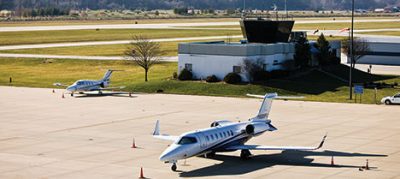Aug. 11, 2016
New 5-knot speed assignment increments from ATC may initially give some business aviation pilots pause, but there’s solid reasoning behind the change.
Rich Boll, chairman of the ATC, Airspace and Flight Technologies Working Group of the NBAA Access Committee, explained the change from the 10-knot clearances with which pilots are most familiar is a vital part of the FAA’s efforts to move from distance-based separation (miles-in-trail) to time-based metering of air traffic.

“The controller isn’t just being ‘creative,'” said Boll. “As the FAA moves toward greater use of performance based navigation processes, this is another tool available to precisely align the time an aircraft passes over a certain fix, which allows controllers to better tie STAR procedures into the approach to final.”
Current procedures may require vectors as far as 5- to 10 miles out before turning an aircraft to final, in order to maintain the required separation from other landing traffic. Boll noted the ability to more precisely tune aircraft speeds allows for time-based separations at specific metering points, leading to more direct routing.
“Pilots may notice they’re being slowed down sooner than before, but their overall flight time will be less,” he said.
While pilots are most likely to encounter the new speed assignments primarily during approaches for now, Boll noted the new procedures will ultimately spread throughout the entire National Airspace System as controllers begin metering airplanes at 250, and even 500 miles out, to hit certain points and keep the flow going.
“This is all about bringing aircraft in for landing faster,” he added.
The FAA recently issued a notice providing guidance to controllers for the new speed adjustment procedures, ahead of formal publication in FAA Order JO 7110.65, paragraph 5-7-1, Speed Adjustments, and Section 4-4-12 of the Aeronautical Information Manual. View the FAA notice. (PDF)


 International Business Aviation Council Ltd.
International Business Aviation Council Ltd.